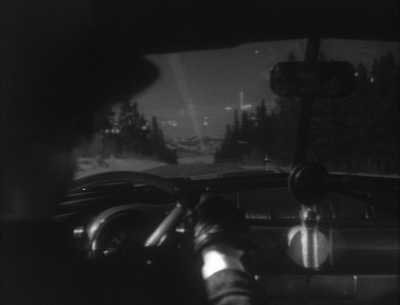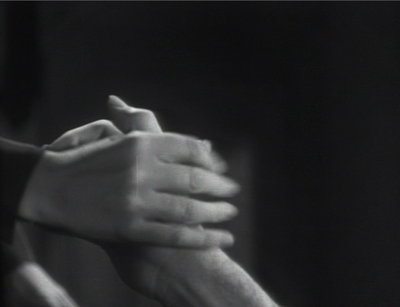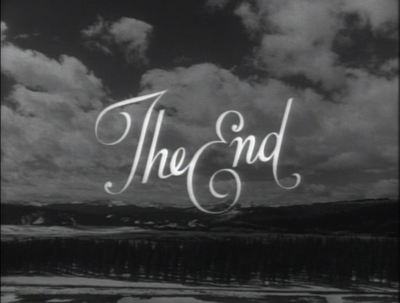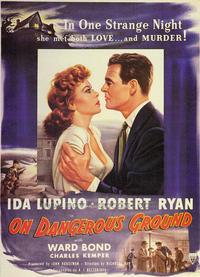 After making two certifiable classics (his debut, They Live By Night and In a Lonely Place) out of his first six films, Nicholas Ray upped his batting average with On Dangerous Ground, the film that launched one of the great gold runs of cinema, a decade-plus level of quality that experienced only one or two aberrations while churning out masterpiece after masterpiece. Though it is not his best film, On Dangerous Ground points to the reason for Ray's upcoming string of quality by succinctly demonstrating his ability to spin prose into poetic, psychological beauty.
After making two certifiable classics (his debut, They Live By Night and In a Lonely Place) out of his first six films, Nicholas Ray upped his batting average with On Dangerous Ground, the film that launched one of the great gold runs of cinema, a decade-plus level of quality that experienced only one or two aberrations while churning out masterpiece after masterpiece. Though it is not his best film, On Dangerous Ground points to the reason for Ray's upcoming string of quality by succinctly demonstrating his ability to spin prose into poetic, psychological beauty.Establishing the film's mood is a vibrant opening inside a car speeding down darkened city streets. Over these shots plays Bernard Herrmann's music, which kicks off with verve. The music is fast and vigorous, like the scherzo of a sonata, a passionate explosion of sound that nevertheless hints at the darker, more dour moods to come. The next dominant sound to come through the mix is the blaring car horn of a detective summoning his two partners, both of whom react to the urgent, impossibly loud sound with complete calm and disinterest, getting everything ready before departing as the impatient man below continue to agitate the whole block. The lackadaisical response of these cops, who are meant to be tracking the murder of one of their own, belies the energy of Herrmann's opening blast, suggesting that the true passion lies underneath these cynical exteriors.
Of the detectives assembled to track down the two perps, Ray devotes his primary attention to Jim Wilson, played Robert Ryan, a man who, for all his gentleness in real life, always looked as if the only things going on behind his eyes were how sad he was and how much he wanted to hurt something to take his mind off things. Ray exploits that look to the fullest: Jim doesn't have to worry about any femmes fatales because he tends to ignore women altogether, both disdainfully (like the lolita who asks him to buy her a drink with such suggestive tones it shouldn't even be called seduction for lack of subtlety) and reluctantly (like the nice soda shop girl who is taken). Ryan's face only stops displaying morose self-absorption when those flashes of anger come out. Unfortunately for those in his vicinity, he gets angry often.
Jim proves more passionate in the suspect search than the others, but his rage clearly comes from areas other than wounded camaraderie. When Wilson breaks into the hideout of the killers' partner, Bernie, Ray uses shot/reverse shots to show the hood's defiance transition into utter terror when he realizes the glint in the cop's eye isn't just righteous fury.
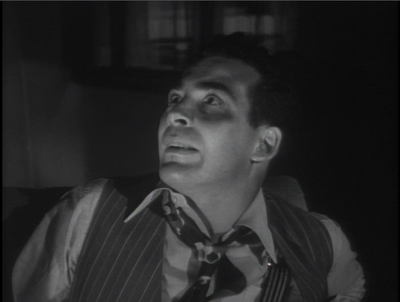
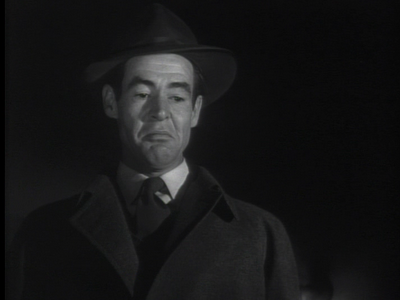
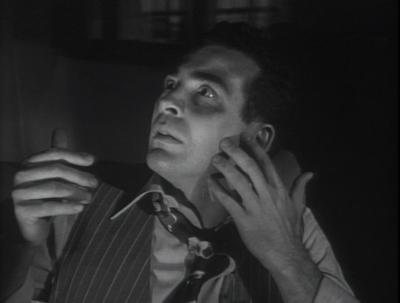
The other cops chastise him, but, for a time, no one rushes to quell him. These streets are too jaded for anyone to really care; of course, the problem with Jim, as his partner "Pop" (Charles Kemper) notes, is that he is too sensitive, that he has never learned to cope with the harshness of the urban underworld to which other cops have inured themselves. In a cruel irony, Jim's violent explosions are his way of lamenting the lack of peace on the streets. When he beats the aforementioned Bernie, he rhetorically asks why "they" always make him get information this way, screaming his question in agony and fury. Later, when Jim beats yet another thug, he responds to Pop's intervention by shouting "How do you live with yourself?" to which the other cop sagely shouts back "I don't! I live with other people!" Wilson, so broken by the evils of the job, now cannot view anyone as human, and naturally that sorrow only turns to more anger.
This perpetual-motion anomie gives On Dangerous Ground an edge that breaks it from its otherwise formulaic, even sentimental (in the end) noir structure. But it is Ray's direction, with its recurring cues, juxtapositions and minutiae, that truly gives the film its flavor. He visualizes the overarching sense of wounded, vulnerable masculinity with relics of past athletic glory from both Jim's and Pop's pasts: Pop carries around a newspaper clipping of his football days, while Jim goes home and picks up an old trophy. These items, reminders of a time of more innocent displays of masculine bravado, give the men more comfort than their current jobs as gun-toting officers. One could also contrast the social adoration they received as star athletes to the disdain they now face as cops, as seen when they accost the wrong man for fitting a description and receive some scathing insults in return. (Ray would use the metaphor of high-school glory days again in Bigger Than Life, where a perennially deflated football makes an even stronger statement about masculine insecurity.)
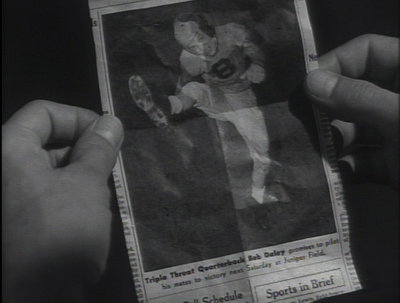
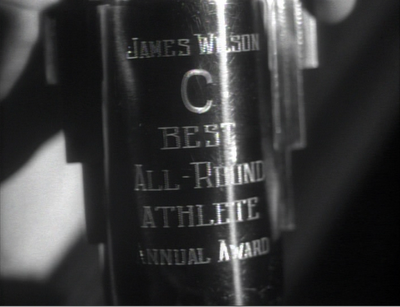
When Jim gets sent to the countryside to assist with a murder (but really to get him away from the scandal of his brutality), Ray wastes little time juxtaposing the concealing, labyrinthine alleys of the urban undercity with the wide-open expanse of the country. Compared to the city, where crooks can hide mere feet away, the flat plains offer nowhere to hide. But then, that also true of the pursuers, and Ray gears up for his upcoming demystified Westerns by presenting the rural manhunt as a foil for the urban one. He links the two by connecting the swarming precinct with the lawless posse rounded up by Walter Brent (Ward Bond), the local farmer whose daughter was killed. The difference, of course, is that where the cops at least had to follow some letter of the law, the posse doesn't even get off the grounds before shooting up a storm. That unrestrained display of bloodthirst and the naked exposure and smaller population only magnifies the sense of wayward masculinity and isolation.
Jim sarcastically refers to this snowy retreat as Siberia to comment upon his banishment, a description that initially conflicts with the idyll and beauty of the surrounding. Nevertheless, Ray frames Wilson's arrival at the Brent homestead with an interior shot looking out the door to show chicken wire surrounding the place, combining with the bars of the window pane to subtly refashion the house into a prison.
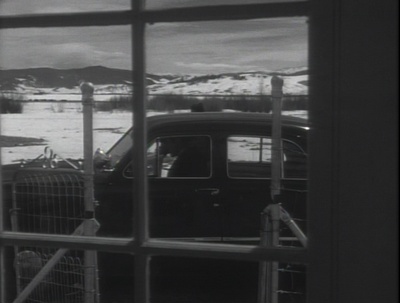
This opened-up setting gives Ray compositional variance, but whether he's shooting angular, claustrophobic alleys or panoramas, he always stresses Jim's separation and despair. Brent is none too pleased to see this "city cop" (words he repeatedly hisses as if quickly venting steam to prevent an explosion), but the raging Jim clearly approves of the more direct and vengeful retribution of the country. When Brent leads his posse out of his farm, he looks back angrily to Wilson expecting liberal disgust and an order to cease this nonsense. Instead, he sees only Jim smiling with grim satisfaction and approval, and Walter suddenly looks unsettled by the tacit permission he's received.
The film takes another turn when Jim and Walter, separated from the rest, approach a lonely house on a hill where a lone light soon extinguishes itself. Convinced the killer has hidden here, they storm up the door and beat on the door, only for a blind woman, Mary (Ida Lupino), to answer. Lupino's face carries concern, worry, blank innocence but also awareness and intelligence. To look at her is to know at once that she's covering for someone but to also know that she means no harm and does not wish to deceive anyone for any reason other than to protect her brother. She instantly throws off the balance of the film, and Ryan blanches when confronted with her, his bitterness and rage momentarily set aside. Ray's framing of the men's search of the house casts them as intruders, their shadows dancing along the walls as Mary sits in a chair looking blankly ahead.
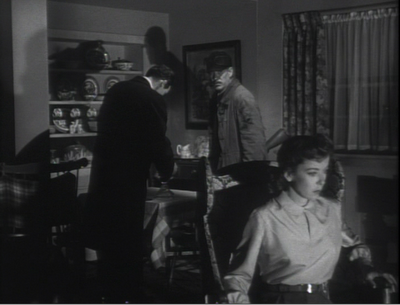
Mary brings out the psychological aspects behind Jim: when he tells her his profession, she asks him, "How is it to be a cop?" an awkward phrasing that inadvertently casts a pathetic attempt at ingratiating distraction as an existential prompt. She notes that he does not treat or speak to her with condescension or sadness, unaware that Wilson is too consumed with his own self-pity to spare any for another person. Nevertheless, she sparks a clear change in him, and though he knows she's hiding someone, his anger dissipates. Jim even behaves like a police officer around Walter, calming down the man, unloading his shotgun and even showing simple human decency in draping a blanket over the man when they stay over at Mary's house. When he goes out hunting for Mary's brother, Danny, he does so with an intent to bring the boy back for a fair trial, not to beat or kill him.
It's a fast turn-around, but Lupino has enough effect to make it plausible, if still improbable. But Ray never lets the film flag, and his handling of Danny is dark and precisely executed. He introduces the deranged lad through the knife he used to kill the girl, the steel of the blade glinting in the dark cellar where he hides, blindly brandished at the beckoning sister who stands at the top of the cellar surrounded by sky and light like the Holy Mother for whom her name derives. Later, when Jim chases the man to an abandoned shack, Danny backs toward a window that casts his knife arm in light while leaving the rest of him darker. A shot of Jim appraising the situation in the middle ground keeps Danny's knife arm in the foreground. Finally, Ray cuts to an extreme close-up of the knife as he threatens Jim, Danny's entire being focused into the weapon until it becomes his visual representation.
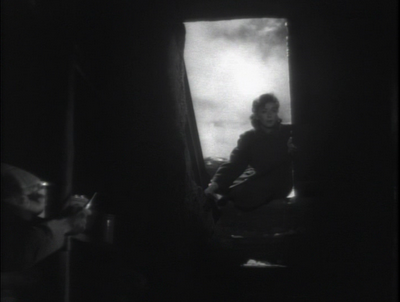
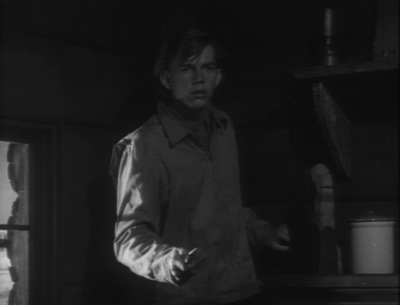
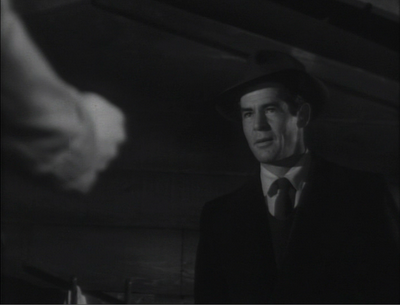
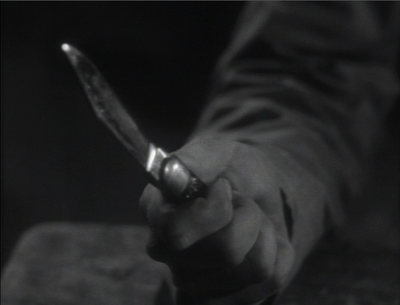
This is but one small example of the masterful technique Ray had already consolidated by this point. Early examples of hand-held shots add frenzy to foot chases, while Ray sends a camera tumbling and unfocusing later to capture the feeling of Jim's and Walter's car accident. Those rawer moments add excitement to the movie, as does the elegant shadow work Ray manages even in the bright, wide-open countryside in daylight.
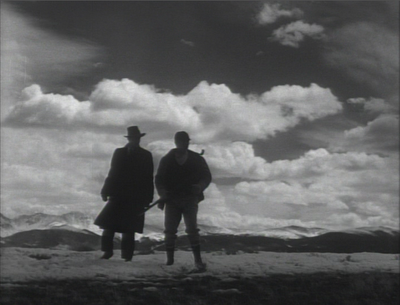
Herrmann's score is also a driving force: led, intriguingly, by the woodwinds, the melodies are forceful but necessarily wary until the brass and strings pick up the music and explode. Herrmann also knows the importance of silence, inserting a key break at the height of the climax, letting the ominous sound of falling pebbles skittering down a rock face communicate the mood and queasy feeling of the resolution of the chase before the music returns.
The film ends with predictable optimism despite its narrative conclusion (Howard Hughes overrode Ray's desire for a more downbeat conclusion), but Ray undercuts much of the sappiness by letting the dour dénouement truly sink in. Mary, already stiff-faced, now looks practically catatonic, and a shamed Jim speaks even less than she does. For all his vivid, impassioned Romanticism, Ray was also capable of somber grace, and he imbues these last moments with elegance. A fade from rural to urban captures a retreating Jim at a metaphorical crossroads, while a joining of hands shows Jim's and Mary's union. With such gentle work, suddenly the harsh, cold plains look inviting and fulfilling.
